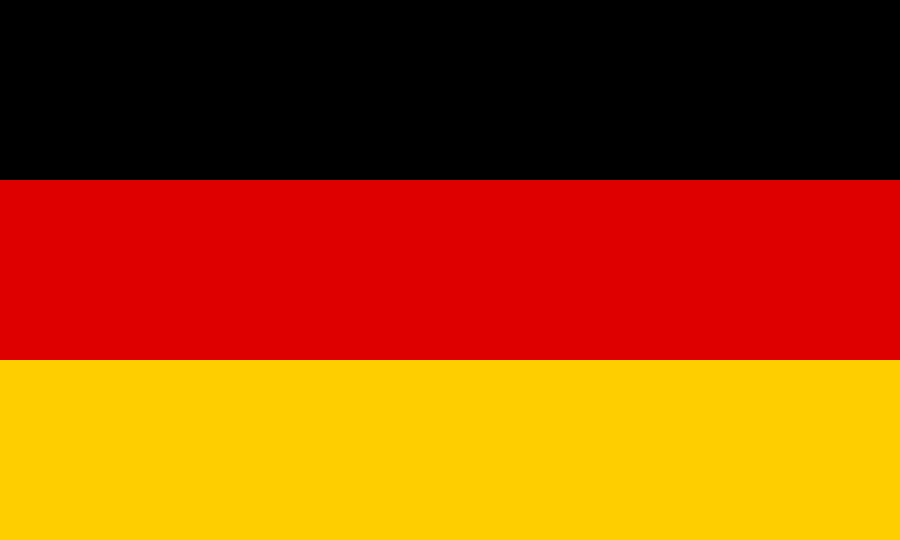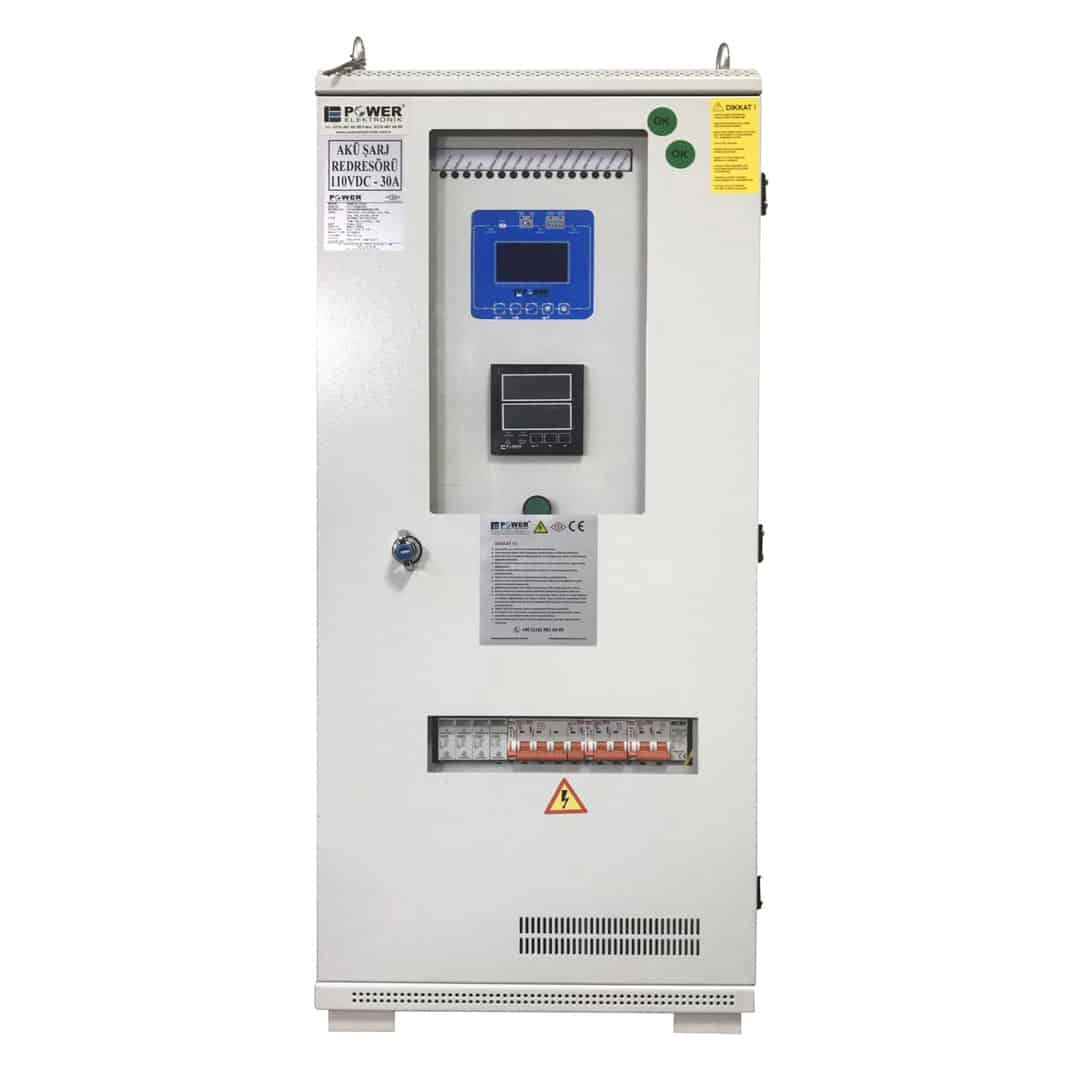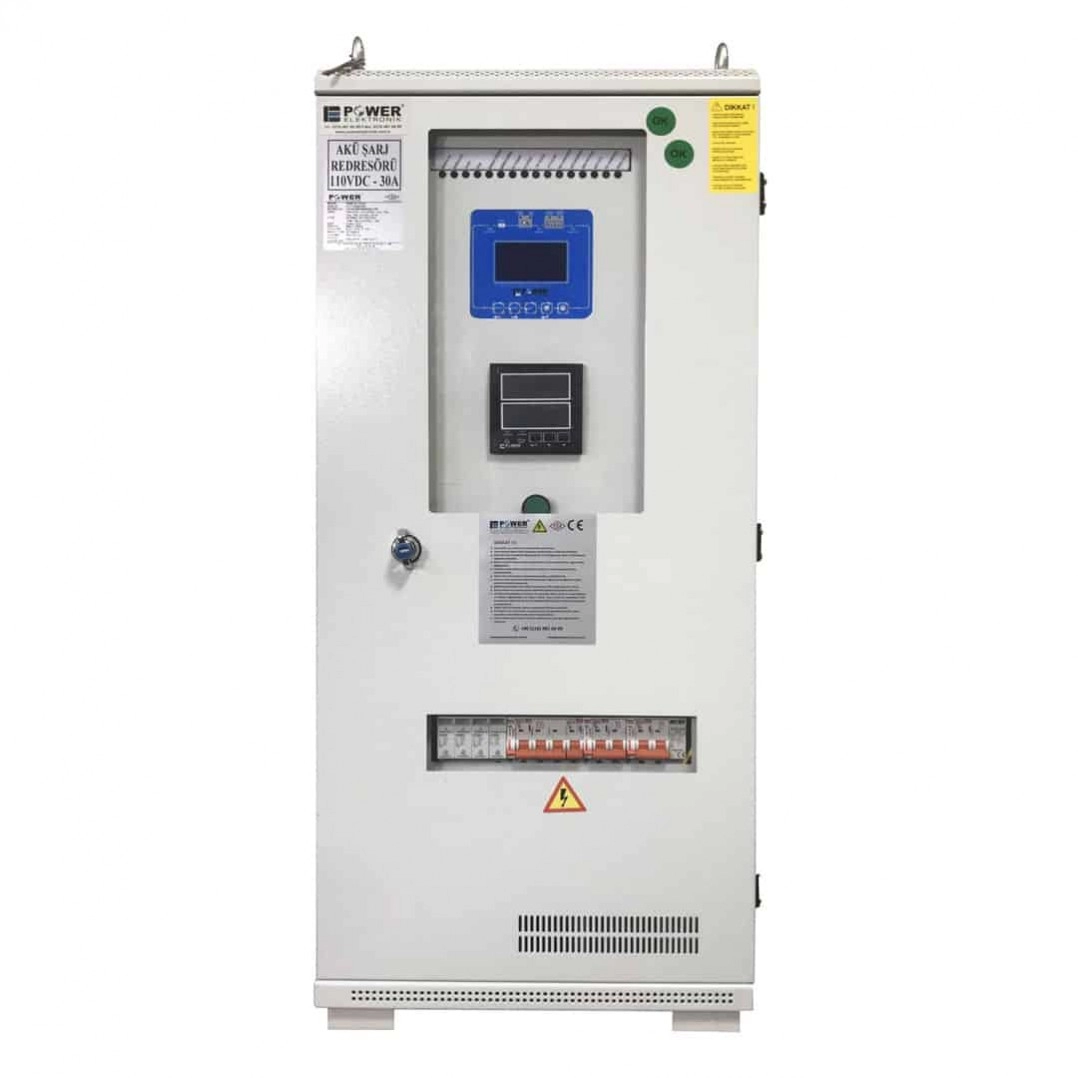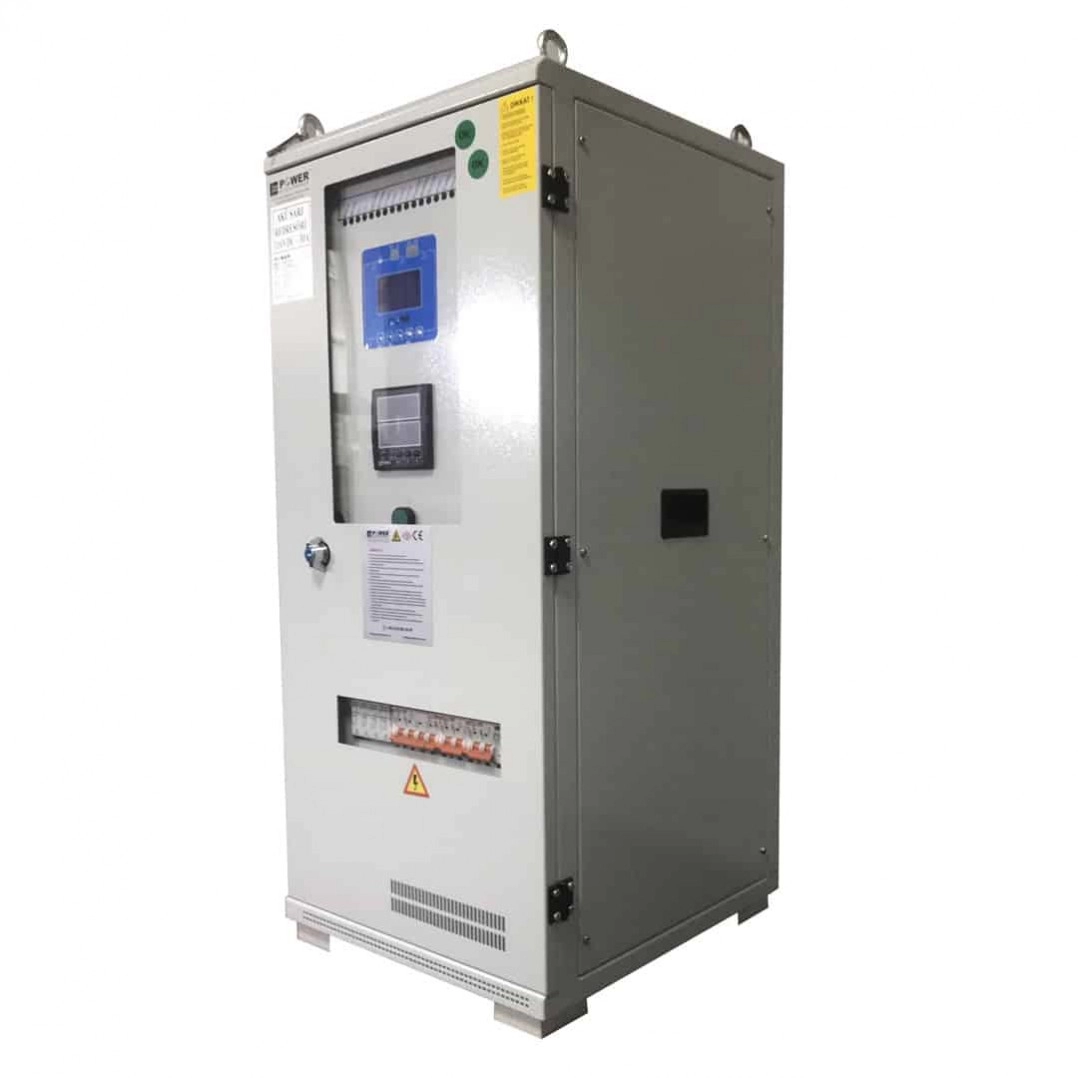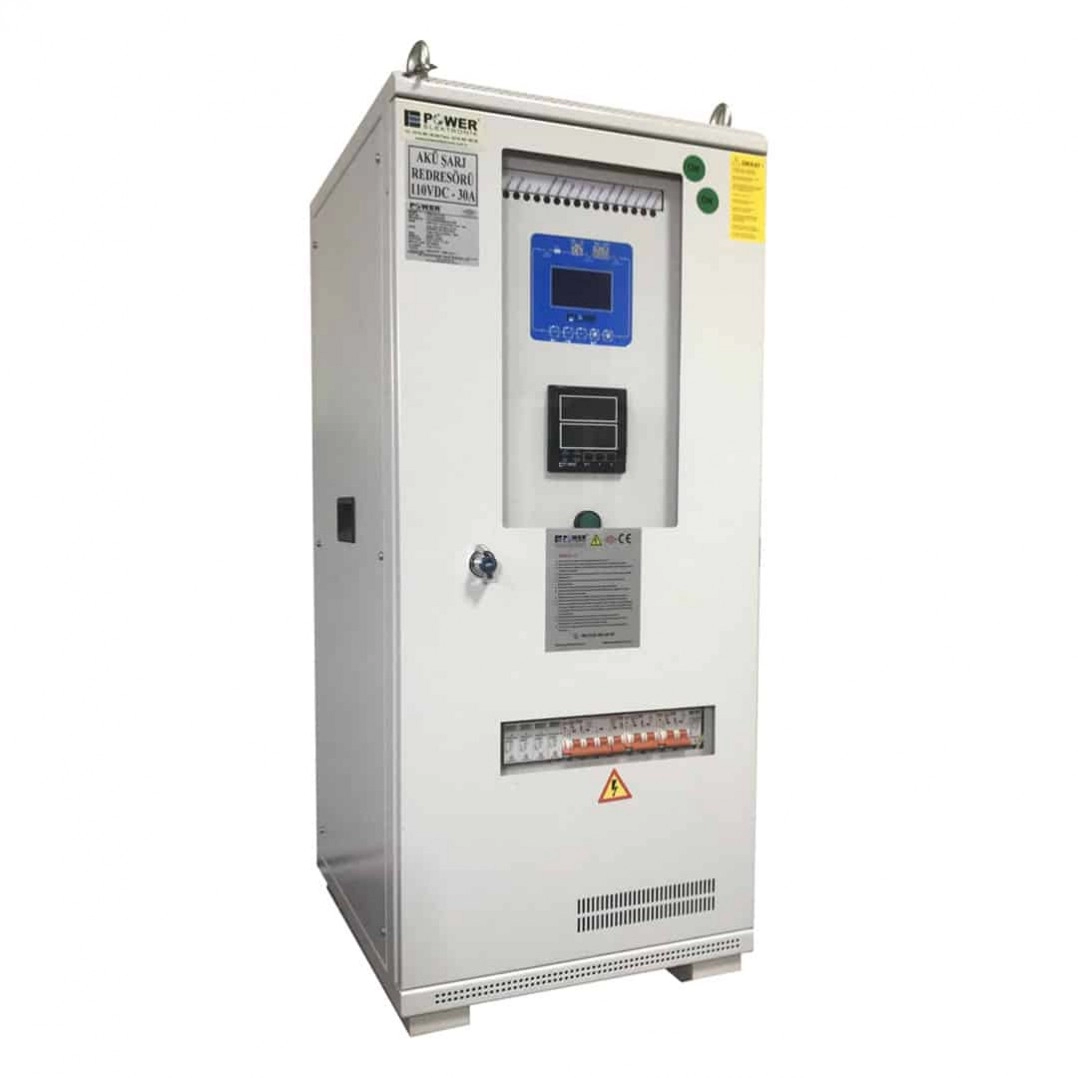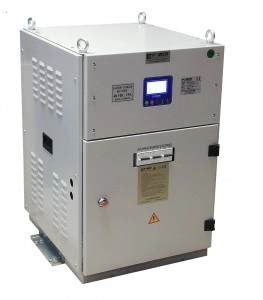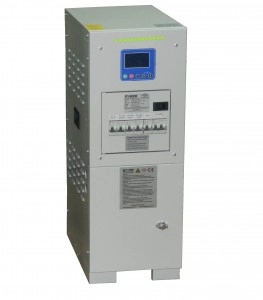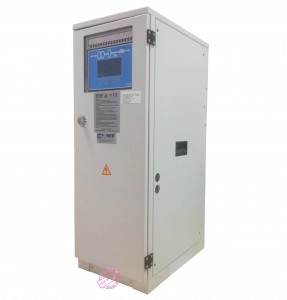PWR33 MODEL 380-400VAC / 110VDC 160A BATTERY CHARGER
INDUSTRIAL BATTERY CHARGER PROPERTIES
» 16-Bit DSP control
» Graphic LCD screen
» 5 control buttons
» 5% low ripple swing
» Dry contact alarm outputs for Scada
» Programmable Boost (fast) charging algorithm
» Programmable Float charging algorithm
» Programmable battery maintenance
» Instant viewing of input-output-battery voltages and currents
» Rectification technology with transformer and thyristor
» Both current and voltage control
» Output voltage regulation with 2-stage Dropper diode unit
» Access from the front and sides
» Input voltage tolerance ± 20% 3-phase 380/400 VAC
» Input frequency 50 Hz ± 5%
» Input surge arrester and fuse protection
» Current and voltage multimeters for input and output batteries other than LCD
» Output voltage 110VDC nominal
» Overtemperature protection
» Overload protection
» DC+ and DC - leakage protection
» Output short circuit protection
» Status indicator LEDs
» Optional high IP protection
» Extra security with double protection door
» Emergency stop button
» Mimic diagram
» Graphic LCD screen
» 5 control buttons
» 5% low ripple swing
» Dry contact alarm outputs for Scada
» Programmable Boost (fast) charging algorithm
» Programmable Float charging algorithm
» Programmable battery maintenance
» Instant viewing of input-output-battery voltages and currents
» Rectification technology with transformer and thyristor
» Both current and voltage control
» Output voltage regulation with 2-stage Dropper diode unit
» Access from the front and sides
» Input voltage tolerance ± 20% 3-phase 380/400 VAC
» Input frequency 50 Hz ± 5%
» Input surge arrester and fuse protection
» Current and voltage multimeters for input and output batteries other than LCD
» Output voltage 110VDC nominal
» Overtemperature protection
» Overload protection
» DC+ and DC - leakage protection
» Output short circuit protection
» Status indicator LEDs
» Optional high IP protection
» Extra security with double protection door
» Emergency stop button
» Mimic diagram




